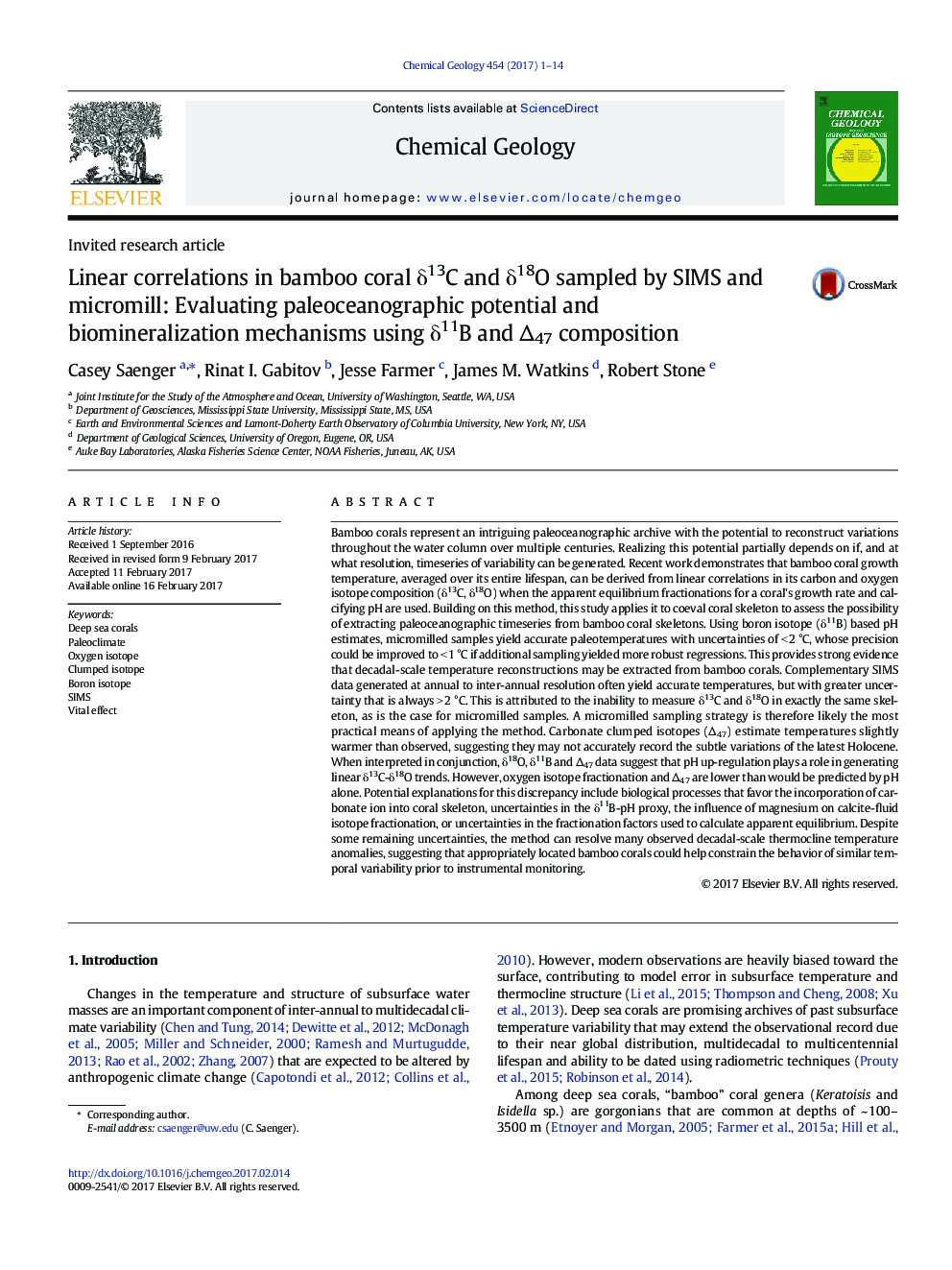| Article ID | Journal | Published Year | Pages | File Type |
|---|---|---|---|---|
| 5782801 | Chemical Geology | 2017 | 14 Pages |
Abstract
Bamboo corals represent an intriguing paleoceanographic archive with the potential to reconstruct variations throughout the water column over multiple centuries. Realizing this potential partially depends on if, and at what resolution, timeseries of variability can be generated. Recent work demonstrates that bamboo coral growth temperature, averaged over its entire lifespan, can be derived from linear correlations in its carbon and oxygen isotope composition (δ13C, δ18O) when the apparent equilibrium fractionations for a coral's growth rate and calcifying pH are used. Building on this method, this study applies it to coeval coral skeleton to assess the possibility of extracting paleoceanographic timeseries from bamboo coral skeletons. Using boron isotope (δ11B) based pH estimates, micromilled samples yield accurate paleotemperatures with uncertainties of < 2 °C, whose precision could be improved to < 1 °C if additional sampling yielded more robust regressions. This provides strong evidence that decadal-scale temperature reconstructions may be extracted from bamboo corals. Complementary SIMS data generated at annual to inter-annual resolution often yield accurate temperatures, but with greater uncertainty that is always > 2 °C. This is attributed to the inability to measure δ13C and δ18O in exactly the same skeleton, as is the case for micromilled samples. A micromilled sampling strategy is therefore likely the most practical means of applying the method. Carbonate clumped isotopes (â47) estimate temperatures slightly warmer than observed, suggesting they may not accurately record the subtle variations of the latest Holocene. When interpreted in conjunction, δ18O, δ11B and â47 data suggest that pH up-regulation plays a role in generating linear δ13C-δ18O trends. However, oxygen isotope fractionation and â47 are lower than would be predicted by pH alone. Potential explanations for this discrepancy include biological processes that favor the incorporation of carbonate ion into coral skeleton, uncertainties in the δ11B-pH proxy, the influence of magnesium on calcite-fluid isotope fractionation, or uncertainties in the fractionation factors used to calculate apparent equilibrium. Despite some remaining uncertainties, the method can resolve many observed decadal-scale thermocline temperature anomalies, suggesting that appropriately located bamboo corals could help constrain the behavior of similar temporal variability prior to instrumental monitoring.
Related Topics
Physical Sciences and Engineering
Earth and Planetary Sciences
Geochemistry and Petrology
Authors
Casey Saenger, Rinat I. Gabitov, Jesse Farmer, James M. Watkins, Robert Stone,
